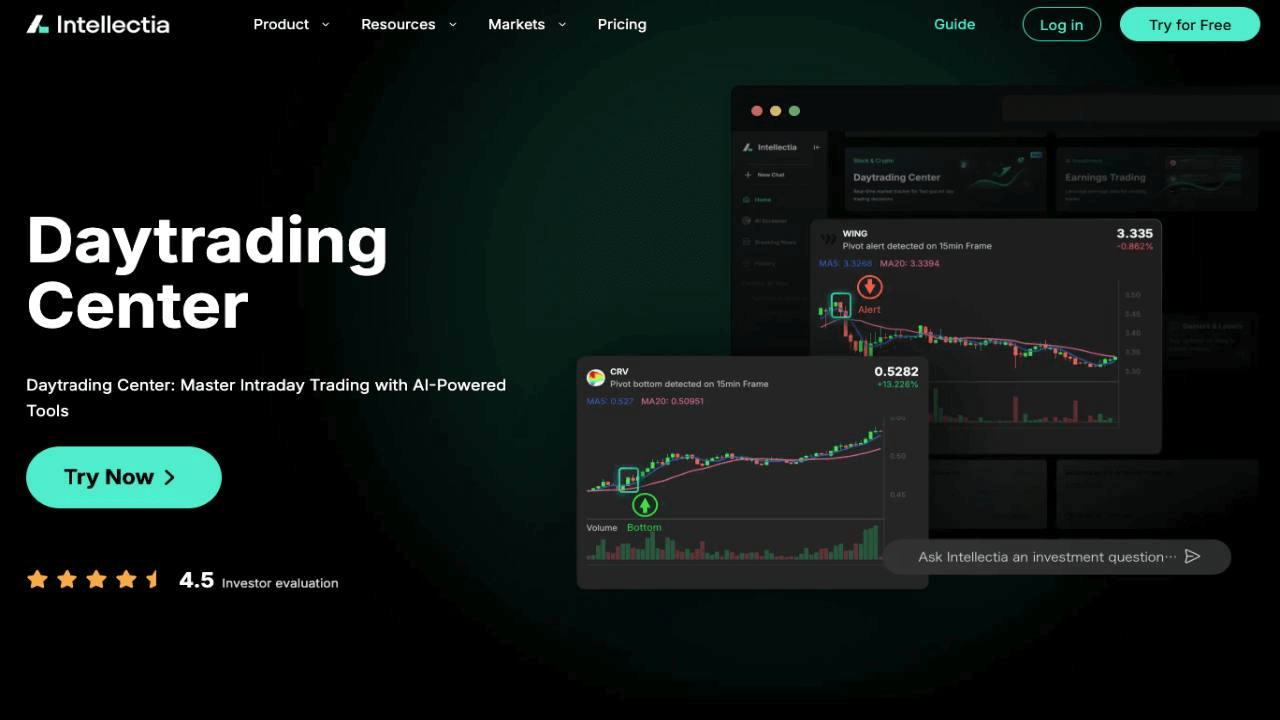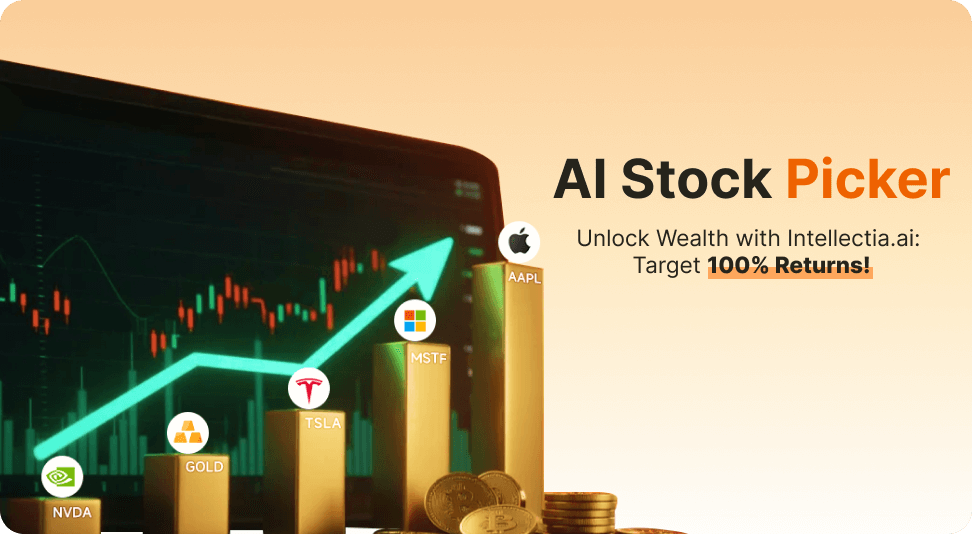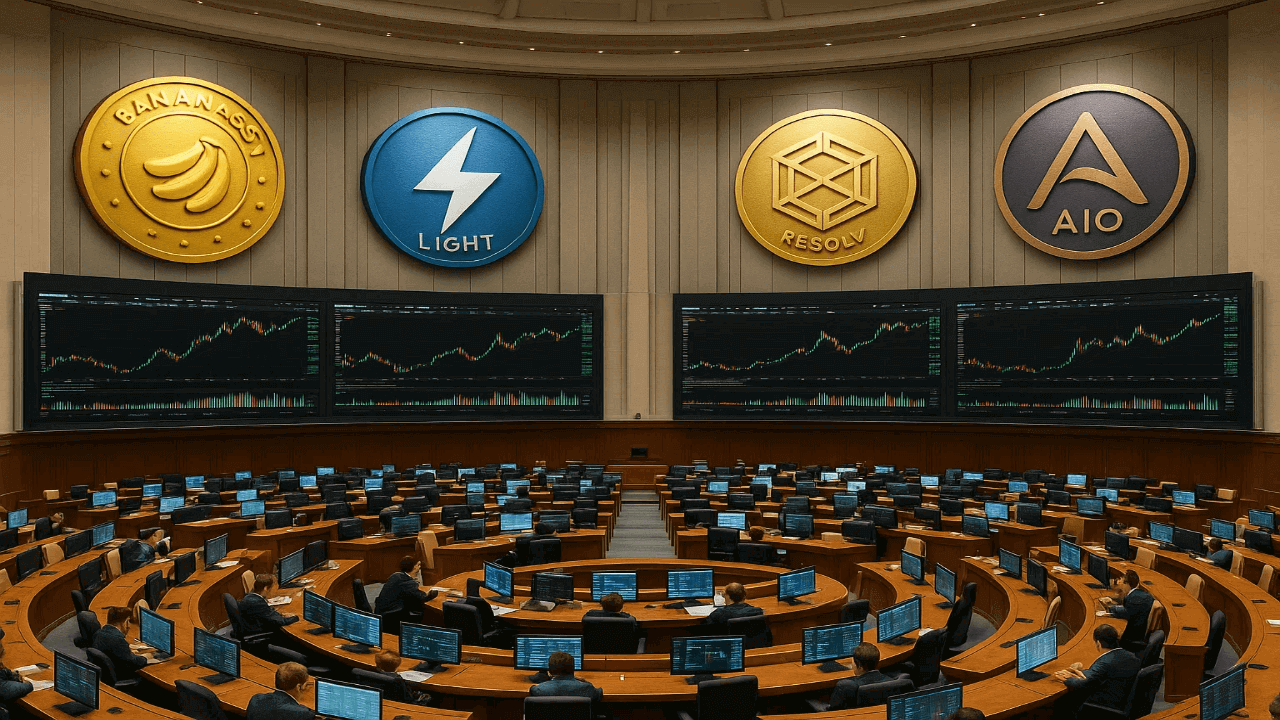Key Takeaways
- Ethereum is a blockchain-based, decentralised technology platform providing powerful tools to blockchain developers.
- Solana utilises a hybrid protocol that combines proof-of-stake (PoS) with Proof of History (PoH) to provide enhanced services and execute smart contracts.
- ETH and SOL both show notable institutional adoption in recent years.
- Meanwhile, a platform like Intellectia AI offers elegant and efficient features to make trading decisions on ETH and SOL.
Introduction
Blockchain technology is emerging rapidly and becoming the centre of discussion among crypto enthusiasts, including businesses, developers, and investors. Many have already made fortunes through cryptocurrencies and blockchain technology. There are thousands of crypto tokens in circulation in the blockchain ecosystem. Solana and Ethereum are among the top ten with significant investor attention.
Both SOL and ETH are cryptocurrencies, but there are some significant differences between them. These projects offer distinct use cases, thereby boosting adoption and use. Therefore, it is expected to have an ongoing debate among investors about which one is better: Solana or Ethereum, whether they should invest in either of these cryptocurrency projects or which one.
However, it is essential to have a certain level of understanding of any crypto project before investing, as it drives investors to determine the best asset, besides generating considerable profits. This article will introduce you to the top two crypto projects, including all basic components, a comparison between these two crypto assets to determine the most potential for your trading method, and provide appropriate guidelines to invest successfully in any of these crypto projects.

What is Ethereum (ETH)?
Ethereum is a blockchain-based, decentralised technology platform. This platform provides powerful tools to blockchain developers, allowing them to create and utilise decentralised assets, dApps, and services while preserving value. The native token of the network is ETH. One of the core components, besides the blockchain network, is that it has no central authority to manage the network.
The users of the network consecutively secure and maintain the blockchain network. The inception of Ethereum occurred in 2013, led by Vitalik Buterin, along with other co-founders. Buterin once said that Ethereum is like smartphones compared to the top cryptocurrency, Bitcoin, which he described as a pocket calculator, as it only transfers and stores value.

Ethereum is a second-generation cryptocurrency that is widely accepted and has become the second-largest cryptocurrency, primarily due to its attractive features, which follow those of Bitcoin. The design enables anyone to use Ethereum, making it secure, programmable, decentralized, and scalable for creating and utilizing any digital, secure technology.
The project managed to raise $ 18.3 million, and the IPO price was $0.311, with a total of $60 million sold. Ethereum replaces the proof-of-work (PoW) protocol and uses the proof-of-stake (PoS) protocol.
What is Solana (SOL)?
Solana is a highly functional blockchain technology platform that solves the shortcomings of previous crypto projects. In recent years, due to its enhanced speed, efficiency, and scalability, Solana has become an attractive asset to crypto enthusiasts, including developers, users, and investors. The most appealing aspect is Solana's ability to facilitate faster transactions (approximately 65,000 per second) and lower fees (averaging $0.00025 per transaction).
The native token of the platform is SOL, which has experienced significant growth since its inception in 2017 and its launch on the mainnet, reflecting substantial attention and interest. The Solana Foundation fully launched the project on the mainnet in March 2020. Meanwhile, the most important person behind the crypto project was Anatoly Yakovenko.

Solana utilises a hybrid protocol that combines proof-of-stake (PoS) with Proof of History (PoH) to provide enhanced services and execute smart contracts. This blockchain platform enables developers and users to create, mint, and sell non-fungible tokens (NFTs), build decentralized finance (DeFi) platforms, and develop Web3 applications, among other capabilities.
The crypto project allows its users to make payments without any intermediary, offering more secure, scalable, faster, and lower transaction fees.

Solana vs Ethereum: Key Features and Differences
Solana and Ethereum are both highly popular cryptocurrency projects in the industry, where Ethereum has historically been the dominant one, and Solana has emerged as a competitor, offering enhanced features. This part lists and differentiates the core components of Solana and Ethereum.
Features | Solana | Ethereum |
|---|---|---|
Consensus Mechanism | Proof of Stake (PoS) and Proof of History (PoH) | Proof of Stake (PoS) (Former Proof of Work) |
Transactions Per Second (TPS) | Typically, TPS ranges from 2000-3000 (Capable of handling 65000) | Typically between 15-30 (increases with layer 2) |
Block Time | 400 milliseconds | 12 Seconds |
Average Transaction Fees | Very low (typically on average around USD 0.00025) | $0.50–$50 (varies and increases due to network congestion) |
Smart Contract Language | C, C++, Rust (Non-EVM) | Solidity (EVM-compatible) |
Decentralization | Decentralized (less validation compared to Ethereum) | Highly Decentralized |
Downtime History | Already experienced several outages | Very stable |
Ecosystem Maturity | Rapidly increasing, especially in gaming, DeFi, and NFTs | Mature, notable ecosystem of DeFi, dApps, and enterprise solutions |
Popular Use Cases | Social dApps, high-frequency trading, gaming, NFTs, and low-cost transactions | Blockchain Enterprise solutions, DeFi, Stablecoin, etc |
The table provides a comprehensive overview of the key components and features of Ethereum and Solana. It reflects that Ethereum upgrades its protocol from Proof-of-Work (PoW) to Proof-of-Stake (PoS), making it one of the leading blockchain platforms for DeFi, dApps, NFTs, and more. The shift supported Ethereum for enhanced scalability and reduced energy consumption. The base layer involves a high gas fee and lower transaction rates. A layer two solution addresses these issues.
Meanwhile, Solana combines Proof-of-Stake (PoS) and its unique Proof-of-History (PoH) protocols to provide faster and lower-cost transactions. The platform becomes attractive to users and developers who require frequent and robust transactions, such as those in gaming, high-frequency (HFT) trading, and NFTs. Solana has fewer validators than Ethereum and has experienced some network instability, but its ecosystem is rapidly expanding.
Thus, it is proven that Ethereum offers a more secure, stable, and decentralized platform, albeit with the challenges of higher transaction fees and slower transaction speeds. In the meantime, Solana offers a more cost-efficient and high-performance alternative platform that focuses on scalability, with a continued effort to improve stability and decentralization. Therefore, the choice between these two often depends on user demand or specific use cases.
In both coins, the price stability and larger market cap could offer a decent swing trading opportunity. Investors might use intellectia.ai Swing Trading tools to get the best out of these coins.

Ethereum vs Solana: Future Outlook (2025 and Beyond)
This section outlines the key developments that both Ethereum and Solana are currently working on, as well as their respective growth expectations and key challenges.
Ethereum Roadmap
- The blockchain recently working on "Ethereum 2.0" or "Serenity” to enhance the ecosystem, such as,
- Sharding (The Surge): It is a critical component for scalability. A complete implementation can eventually enable Ethereum up to 100,000 transactions per second (TPS).
- Layer 2 (L2) Scaling Solutions: The Layer 2 solution will enable the platform to offer lower transaction fees and faster transactions while maintaining security integrity.
- The Purge (State Expiry and History Expiry): This aims to reduce the amount of historical data that validators need to store, which may make the network more accessible and efficient for new users.
Ethereum Growth Expectations
- Ethereum boasts a robust community and is highly secure, making the project one of the top in the blockchain industry, which is likely to continue dominating the DeFi and NFT ecosystems.
- The Layer 2 solution may alleviate the high gas fees, and a slower speed can boost the project's adoption.
- The robust decentralization and security offering attract institutional investors, which might help the project to maintain growth in the upcoming years.
- Experts suggest that the price of ETH will reach $6000 by the end of 2025 and $31,672 per token by the end of 2029.
Ethereum Challenges
- Switching to the Layer 2 solution on the mainnet can increase complexity and cost, particularly during peak periods.
- It can be challenging to deal with competitors like Solana, especially in terms of scalability, cost, and transaction speed.
- Another significant factor that the blockchain project must address is a regulatory challenge, as many regions still don’t accept cryptocurrencies.
Solana Roadmap
- Firedancer: A significant validator aims to enhance performance and reliability while also reducing the likelihood of network outages.
- UX improvement: The project has capabilities to interact with other ecosystems.
- Improving Tower BFT and Turbine: The continuous improvement will help enhance speed and efficiency.
Solana Growth Expectations
- The project targets dApps that require high speed and low cost, making it an attractive choice for sectors such as gaming, consumer finance, and social media.
- Unique tooling and easy implementation make Solana an attractive choice for blockchain developers.
- The blockchain project is a potential pioneer in Web3 applications and the NFT marketplace.
- The price of a Solana token may reach $ 220 by December 2025 and $1,200 by the end of 2030, according to many experts.

Solana Challenges
- The project must address the centralization concern by increasing the number of validators.
- Has experienced several outages. Firedancer can be effective, but it is still in progress.
- Has regulatory challenges due to network classification and token issuance.
Solana vs Ethereum: Institutional Interest and Enterprise Adoption
ETH and SOL both show notable institutional adoption in recent years. Institutions, including Mastercard, Visa, and BlackRock, are either utilizing the Layer 2 solution or building on the Ethereum blockchain. The blockchain leverages efficiency and transparency in a complex environment. Ethereum ETFs make the asset more accessible for investors and institutions.
Solana is attractive for users seeking frequent transactions and cost efficiency. Therefore, it is no wonder that the network becomes attractive for high-frequency trading (HFT), gaming, payments, and other applications. The rapid adoption can drive institutions to launch assets like the Solana ETF, making the asset more accessible to investors.
You can always use your Intellectia.ai Financial AI assistant to know any query about institutional involvement.

SOL vs ETH: Investment Considerations
This section outlines the most common features that investors consider when selecting a cryptocurrency asset:
Feature | SOL | ETH |
|---|---|---|
Market Cap | $73.85 billion | $288.07 billion |
Price History | Hit ATH in 2021, posted a significant recovery in 2023-2024 | The price has remained in an uptrend since 2015, moving in an uptrend over the period |
Volatility | Highly volatile, sensitive to tech issues and market sentiment | Comparatively less volatile than SOL or other altcoins |
Liquidity | Good liquidity, but typically lower compared to ETH | High liquidity, and the asset is already listed on most major exchanges |
Institutional Adoption | Increasing due to rapid adoption and attractive feature offerings | Solid and growing, the asset is grouped among secure and established |
Risk Profile | Involves high risk due to technical issues (outages), new assets, concerns about centralization, and other factors. | Involves comparatively lower risks than SOL |
You can group Solana as a high-risk, high-reward type of asset, as it is a comparatively new asset in the crypto industry. It offers solutions and enhanced services compared to previous ones. The network outage and decentralization concerns are two significant factors that the project must address to achieve a competitive edge over its competitors.
Meanwhile, Ethereum established itself among the top list of the crypto industry, offering a more decentralized, secure, and established asset class. The risk profile is lower compared to Solana, but implementing the Layer 2 solution successfully is challenging, as it would address current issues such as transaction speed and higher gas fees.
ETH vs SOL: Pros and Cons
This section outlines the advantages and disadvantages of both cryptocurrencies, Ethereum and Solana.
ETH Pros And Cons
Pros | Cons |
|---|---|
Established ecosystem | Complex Transition Process (shifting to Ethereum 2.0) |
Proven security | Higher transaction costs |
Provide more scalability | Slower speed |
Massive institutional adoption and robust community | - |
SOL Pros And Cons
Pros | Cons |
|---|---|
High performance and lower costs | Technical issues (historical outages) |
Firedancer Upgrade (2025), DePIN | Centralization concern (smaller validator network compared to ETH) |
Innovative Consensus Mechanism (combining PoS and PoH) | Although growing, the ecosystem is comparatively lower than ETH |
Attractive stacking reward | - |
Attractive for high-risk, high-reward investors | - |
Investment Strategy Tips for ETH or SOL
Now, if you want to invest in either SOL or ETH, you can follow the methods below to increase profitability, such as
- Technical Analysis: You can utilize the crypto technical analysis feature offerings from Intellectia AI to determine the most elegant positions to place your trades.
- Price Prediction: Intellectia AI delivers price predictions based on various key metrics and sufficient analysis, making it easier for investors to set a profit target.
- Swing Trading Signals: You can follow swing trading signals to maximise your profits and limit risks.
- Day Trading Signals: You can utilise the day trading centre of Intellectia AI to make elegant day trading decisions.

Conclusion
The article includes all the basic components and key comparisons for top cryptocurrencies, such as Solana and Ethereum. Now that you have a basic understanding of these assets, you should be able to make informed investment decisions.
Meanwhile, a platform like Intellectia.ai offers efficient features to make trading decisions much easier. So, anyone can sign up anytime to analyze various trading assets, including cryptocurrencies, stocks, and ETF. Explore AI tools to enhance the trading experience.











